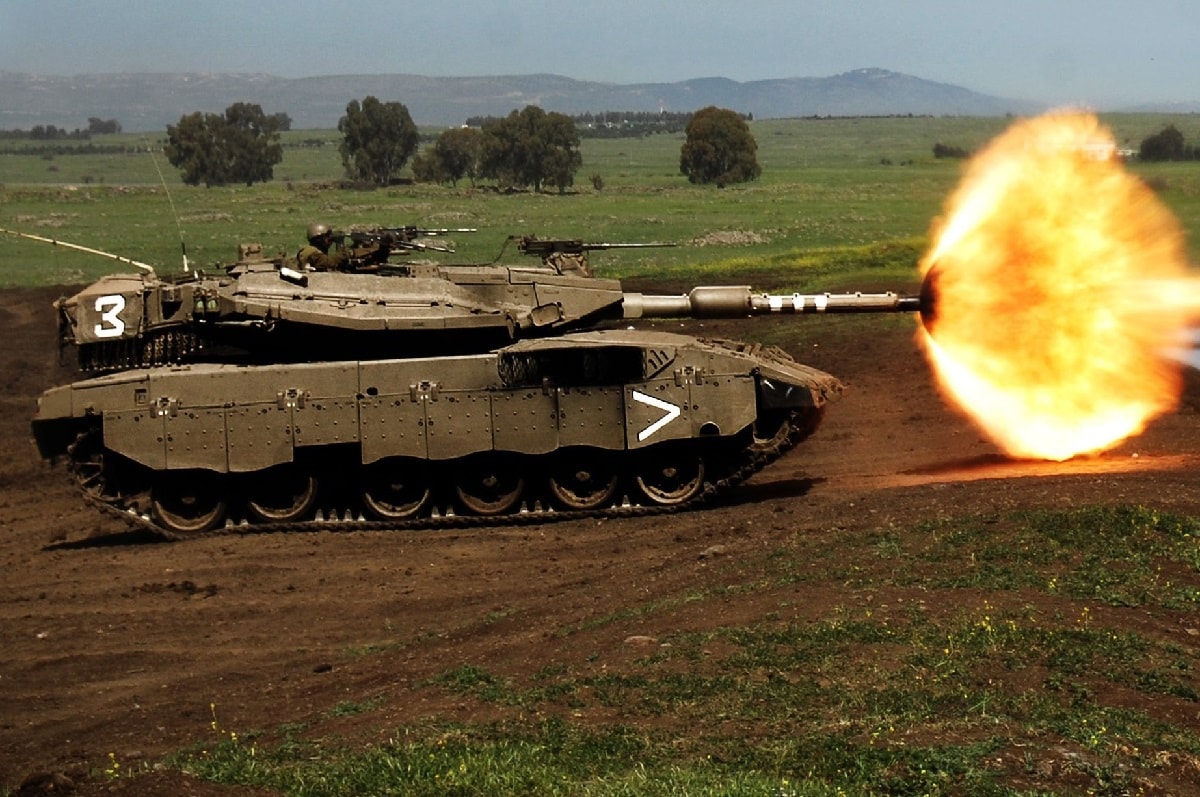Israel’s Merkava is Simply the Best… and Even in a Museum – Often described as one of the absolute best tanks in the world, the Israel Defense Forces’ (IDF’s) Merkava IV is the latest in a series of main battle tanks (MBTs) that were first developed for the IDF in the 1970s, and which remain the backbone of the IDF’s armored corps. Development of the first Merkava – which means “Chariot” in Hebrew – began in the mid-1970s, after the failure to purchase Chieftain tanks from the United Kingdom.
Merkava: How This Tank Was Born
Designed by General Israel Tal following lessons learned during the armored clashes of the Yom Kippur War, the domestically-build tank was developed as a platform that could take on Soviet tanks that were in service with many of Israel’s Arab rivals. The resulting Merkava Mk I was laid out in a rather unorthodox manner compared to contemporary Western and Soviet tanks, and it had elements more common to some infantry fighting vehicles of the era. The engine was moved to the front of the crew compartment, while the turret was placed further back on the chassis.
The Merkava Mk I entered official service in 1979, and it was used extensively just three years later in the 1982 Lebanon War, where it fought against Soviet-made Syrian T-72s in the Bekaa Valley to great success. Even as it was seen as a more than capable MBT, the IDF has continued to upgrade and enhance the tank, which has most recently been produced as the Merkava IV, a tank that has earned the reputation as being one of the best in the world.
Merkava: Improving Upon the Best
The Mk IV Barak is the most recent variant of the Merkava MBT. Development began on it in the late 1990s, and it entered full production in 2004. It is slightly larger than the Merkava III, which has been in service with the IDF since 1990.
The new variant was designed as a “smart tank” with a multitude of sensors and a task computer, which will present all information to both the crew inside the tank as well as the other tanks and vehicles present in the field. The new Mk IV is also equipped with an all-electric turret developed by Elbit and subsidiary El-Op; and it features a single commander’s hatch – a design decision that was meant to provide additional protection to the roof with a passive armor system. In addition, the turret – which is mounted to the back side of the hull – is equipped with chains that hang down vertically to help detonate any anti-tank devices with a High Explosive Anti-Tank (HEAT) warhead before they can make an impact with the tank’s primary armor.
The main armament of the Merkava IV is a 120mm smoothbore gun, developed by Israel Military Industries based on the successful cannon employed on the previous generation MBT. That main gun can fire a full range of 120mm ammunition types, including 120mm APFSDS-FS (kinetic) rounds, and their training derivatives, HEAT (hollow-charge) types, and anti-personnel/anti-material ammunitions.
In addition, secondary armament consists of a 7.62 mm coaxial machine gun, a 7.62 mm machine gun mounted on the right side of the turret roof, and an internally mounted 60 mm breech-loaded mortar. The roof-mounted machine gun can be remotely aimed and fired by the commander from within the turret and traversed to full 360 degrees.
Trophy Winner
The modern Merkava was also one of the first armored vehicles to be equipped with the Trophy Active Protection System (APS), the only fully operational and combat-proven APS against anti-tank guided missiles in the world. The Trophy APS was developed by Israel’s Rafael Advanced Defense Systems and Israel Aircraft Industries’ Elta Group. Designed to detect and neutralize incoming projectiles, the Trophy system is equipped with four radar antennas and fire-control radars to track incoming threats such as anti-tank-guided-missiles (ATGMs), and rocket-propelled grenades. Once a projectile is detected, the Trophy system fires a shotgun-type blast to neutralize the threat.
The APS was first installed on the Merkava tanks in late 2009, and it received its “baptism by fire” on March 1, 2011. The system has since proved its efficacy in multiple combat deployments, including during Operation Protective Edge, where IDF tanks were able to operate in the Gaza Strip without suffering any losses.
The Merkava Rolled to Amman
What is also notable about the Merkava is that it has been a closely guarded secret of the State of Israel, so much so that it hadn’t been exported. In fact, it was a big deal that one of the tanks crossed into neighboring Jordan – and not as an invader.
The one-time adversaries have become regional partners, and in 2018 as part of the growing defense and diplomatic ties between Jerusalem and Amman, Israel donated one of its retired Merkava tanks to Jordan. That tank has since been placed on exhibit at the Royal Tank Museum, which was established by King Abdullah in 2007 to preserve tanks and armored vehicles used by the Jordanian Armed Forces (JAF), as well as to showcase other important tanks from around the world.

The transfer was not without some controversy but was made by then Prime Minister Benjamin Netanyahu and Defense Minister Avigdor Liberman, who considered it carefully due to the sensitivity of providing an Arab country – even one with which Israel has peace – with one of the country’s most top-secret weapons.
But what would one of the best tank museums in the world be without one of the best tanks ever built?





